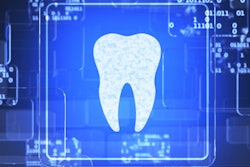
A surge in the use of digital communication tools during the pandemic has created new challenges for dental providers in patient outreach, with the potential for long-lasting effects beyond the public health crisis.
A survey taken two weeks after lockdown measures were imposed in the U.S. underscored the pandemic's swift effect on communication habits. For the survey, which was conducted in early April 2020, 1,374 adults were asked about how their communication with adults from outside their household had changed, excluding work communications.
Researchers found that 43% of respondents sent more text messages, 35% partook in more social media, and 30% engaged in more video calls.
"Taking all modes together, 46% of respondents had only increased their digital communication, without decreasing any of the methods," University of Zurich communications and media specialist Minh Hao Nguyen, PhD, and colleagues wrote in a paper published in the open-access journal Social Media + Society.
Furthermore, the researchers repeated the survey one month later and found similar results, Nguyen commented to DrBicuspid.com. They also found that women and people living alone were among the demographic groups most likely to increase use of digital communications.
Perhaps unsurprisingly, the youngest people in the study were more likely to report greater use of digital communication methods. Conversely, the oldest respondents were the most likely to say their use decreased.
 Changes in people's digital communication behaviors during the COVID-19 pandemic. Image courtesy of Minh Hao Nguyen, PhD.
Changes in people's digital communication behaviors during the COVID-19 pandemic. Image courtesy of Minh Hao Nguyen, PhD.A wake-up call for dental practices
Effective communication with patients has always been important, but it became crucial after the pandemic struck. In a video tutorial for dentists broadcast on Facebook and other online outlets, communications experts Blake Hadley and Kristie Boltz provided tips on messaging during the crisis.
 Blake Hadley.
Blake Hadley.Among other things, they advised keeping messages brief and relevant to the community served, offering video consults, opening direct messaging on social media channels, and responding quickly to patients. The last thing a practice wants is to have patients reach out and have their messages go unanswered, advised Boltz, who is the owner of myDentalCMO, a marketing services company.
When the pandemic started, the most important communications tasks for dental practices included letting patients know about safety protocols and what to do in case of emergencies. Patients typically look for that information online, said Hadley, president and founder of My Social Practice, a social media marketing firm.
In an interview with DrBicuspid.com, Hadley advised practices to ensure information related to COVID-19 was clear and easy to find. For example, dental professionals can pin posts at the top of Facebook pages.
The pandemic has also brought more urgency for a strong marketing presence. Being able to communicate with patients is a necessity now, rather than something that's nice to have, Hadley said.
"It was a wake-up call for a lot of our practices," he told DrBicuspid.com.
Hadley's firm also advised practices to record videos with messages for their patients using their smartphones. This allows practices to speak directly to patients in an authentic way, demonstrating availability to help with their needs and to explain why there might be delays.
 Social media firms offer free downloads of images that dental practices can post online. Image courtesy of My Social Practice.
Social media firms offer free downloads of images that dental practices can post online. Image courtesy of My Social Practice.During the pandemic, video consultations and Zoom meetings came into greater use. This created an expectation on the consumer side for convenient communications, Hadley said.
The ease of communicating quickly online, whether through Facebook or a web chat, is likely to continue to be in demand, he said. My Social Practice favors Facebook and Instagram as social media channels for dentists.
"People want the ability to speak with their dentist from the comfort of their homes," Hadley said.
Dental practices can also offer virtual consultations for initial clinical assessments for free as a lead generation tool.
"The patient already understands a little more about what the doctor can do and what it will cost before even coming into the office," Hadley added.
Teledentistry as a virtual communication tool
Like any crisis, the COVID-19 pandemic created a need for new ways of doing things, including easier and different ways to communicate with patients, commented Dr. Roger P. Levin, founder and CEO of the Levin Group dental practice management consultancy.
 Dr. Roger P. Levin.
Dr. Roger P. Levin.Teledentistry got a real push during the pandemic with greater deployment in orthodontics than in general practice, Levin said. Via virtual consultations, dental providers could make an initial assessment and create a treatment plan that could be implemented later as business reopened.
Teledentistry also enabled distant viewing of emergency cases. Looking forward, certain in-person appointments could be eliminated, which has benefits for a practice's efficiency, Levin pointed out.
Challenges for teledentistry have included differing regulations in U.S. states, though a national consensus is starting to develop. The lack of reimbursement from most health plans is also a challenge, Levin said. As insurance starts to cover more teledental procedures, Levin expects practices will follow the money.
"It really is a tool that has application, but it has a long way to go in terms of penetration," Levin said.
Are changes likely to last?
While the pandemic is a prime opportunity for dentists to communicate with patients online, it begs the question of whether these communication changes will last. In their Social Media + Society article, Nguyen and colleagues expressed uncertainty about the implications of the new communications patterns that emerged during the pandemic. On one hand, the changes were linked to the lockdown restrictions particular to the crisis. But on the other hand, people may have developed preferences for new approaches, they suggested.
"In short, the motivations unique to the time of the pandemic may result in habits that outlast the outbreak itself," Nguyen and colleagues wrote.
Levin has long advised practices to regularly reach out to patients, communicating with them every 30 days, rather than only at appointment times. As the pandemic restrictions ease, practices should go back and reevaluate their strategies for communications and outreach to patients, he said.
My Social Practice's Hadley sees more convenient communication as a lasting trend. Practices need to ensure patients can quickly communicate with them without picking up a phone and there should be multiple ways to schedule an appointment digitally, he said.
Hadley also said that he sees the popularity of short videos -- from 15 seconds to one minute -- as a trend likely to continue to pick up steam. It started with TikTok and has taken off on the Instagram platform, which has made editing easy and fun, he said.
"The future of the way businesses will communicate and tell their stories is through these short videos," Hadley said. "Right now, TikTok videos feel maybe a little young and playful -- dentists may roll their eyes at it -- but the idea of short-form video I think is here to stay."



















